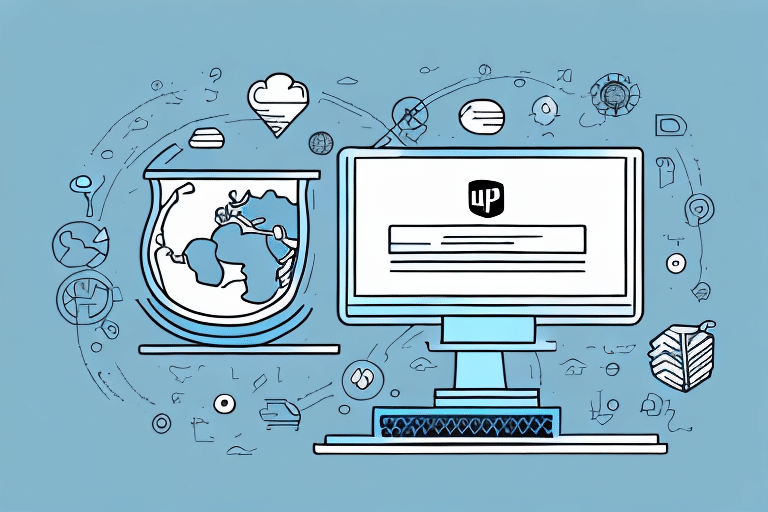Importance and Benefits of Landing Pages
If you're running an online business, you've probably heard about the importance of landing pages. A landing page is a standalone web page designed to convert visitors into leads or customers. Unlike a home page or product page, a landing page focuses on a single goal – encouraging the visitor to take a specific action, such as filling out a form, making a purchase, or downloading an ebook.
The Importance of Landing Pages for Your Business
Landing pages are a crucial component of any online marketing campaign. They are central to converting visitors into leads or customers, significantly impacting your conversion rates and helping you achieve your business objectives. But why are landing pages so vital?
- Focused Objective: Unlike your website's home page, which can distract visitors with multiple offerings, landing pages are designed with a single goal in mind. This clarity helps visitors understand the offer and encourages them to take action.
- High Targeting: You can create distinct landing pages for each marketing campaign, tailoring the message and design to the specific needs of your target audience. This personalization increases the likelihood of a positive response.
- Valuable Insights: Landing pages provide actionable data through performance tracking. Analyzing this data helps you optimize your pages for better results and refine your overall marketing strategy. According to HubSpot, businesses with optimized landing pages see a 55% increase in overall conversions.
Designing Effective Landing Pages
Understanding the Basics of Landing Page Design
The design of your landing page is critical to its success. A poorly designed page can overwhelm or confuse visitors, leading them to leave without taking any action. Here are some best practices for effective landing page design:
- Clear Headline and Subheading: Use a concise, attention-grabbing headline that immediately communicates the value of your offer.
- Visual Elements: Incorporate high-quality images or videos that reinforce your message and engage the visitor.
- Readable Layout: Utilize bullet points or numbered lists to break up text, making it easier to read and digest.
- Prominent CTA: Ensure your call-to-action (CTA) button stands out with contrasting colors and clear, action-oriented text.
Color usage also plays a significant role in landing page effectiveness. Choose colors that are visually appealing and align with your brand. Contrasting colors for your CTA button can help it stand out, drawing the visitor’s attention.
Finally, continuously test and optimize your landing page design. A/B testing different elements, such as headlines or CTA buttons, can help identify what resonates best with your audience. Tools like Google Optimize or Unbounce are excellent for performing these tests.
Choosing the Right Images and Graphics for Your Landing Page
Visuals significantly impact how visitors perceive your landing page. Here are some guidelines for selecting effective images and graphics:
- Support Your Message: Use images or videos that complement and enhance your page's message.
- High-Quality: Ensure all visuals are high-resolution and professionally presented to maintain credibility.
- Avoid Generic Stock Photos: Choose unique visuals that reflect your brand and resonate with your audience.
Targeting Your Audience
Identifying Your Target Audience and Tailoring Your Landing Page
Before designing your landing page, it's essential to identify your target audience. Understanding who your ideal customers are, along with their pain points, goals, and motivations, allows you to tailor your landing page to meet their specific needs. Consider the following:
- Address Pain Points: Use headlines and copy that speak directly to the challenges your visitors are facing.
- Solution-Oriented Messaging: Clearly demonstrate how your offer resolves their problems or helps them achieve their goals.
- Relevant Language: Use terminology and language that resonates with your target audience.
Additionally, consider your audience’s demographics, such as age, gender, income level, and education. For instance, a landing page targeting young adults might feature vibrant colors and dynamic graphics, while one aimed at professionals might adopt a more minimalist and sophisticated design.
Crafting Compelling Content
Crafting a Compelling Headline and Subheading
Your headline and subheading are the first elements visitors encounter on your landing page. They must be compelling and convey the value of your offer effectively. Here are some tips:
- Clarity and Conciseness: Your headline should be clear and to the point, immediately conveying what you offer.
- Benefit-Focused: Highlight the benefits of your offer rather than just its features to show the value to the visitor.
- Emotional Triggers: Use language that evokes emotions like excitement or urgency to encourage immediate action.
Ensure your headline and subheading align with your target audience's needs and motivations. Conducting market research and developing detailed buyer personas can provide valuable insights into crafting a message that resonates.
Writing Copy that Converts: Effective Landing Page Copywriting
The copy on your landing page must persuade visitors to take action. Effective copywriting techniques include:
- Concise and Benefit-Focused Language: Clearly communicate the value of your offer in a straightforward manner.
- Highlight Unique Features: Showcase what sets your offer apart from the competition.
- Visitor-Centric: Focus on addressing the visitor’s needs rather than just promoting your business.
- Storytelling and Social Proof: Incorporate storytelling elements and customer testimonials to build trust and credibility.
Conversion Optimization Strategies
Creating Strong Calls-to-Action (CTAs)
Your call-to-action (CTA) is pivotal in guiding visitors toward conversion. Follow these tips to create effective CTAs:
- Visibility: Design your CTA button to stand out using bright or contrasting colors.
- Action-Oriented Language: Use clear, direct language like "Get Your Free Ebook" or "Start Your Free Trial."
- Prominent Placement: Position your CTA in high-visibility areas, such as above the fold or at the end of the page.
The Role of Social Proof in Building Trust
Social proof helps build credibility and trust with your audience. Incorporate social proof elements on your landing page such as:
- Customer Testimonials: Display reviews or testimonials that highlight the value of your offer.
- Client Logos: Showcase logos of reputable clients or partners to enhance credibility.
- Social Media Metrics: Include social share buttons and display metrics like the number of shares or likes.
Testing and Analytics
A/B Testing: Optimizing Your Landing Pages
A/B testing involves comparing two versions of your landing page to determine which performs better. Effective A/B testing strategies include:
- Single Element Testing: Test one element at a time, such as the headline or CTA button, to accurately measure its impact.
- Clear Goals: Define specific objectives for your tests, such as increasing conversions or reducing bounce rates.
- Reliable Tools: Utilize tools like Google Optimize or Unbounce for robust A/B testing.
Measuring Success with Analytics
Analytics are essential for evaluating the effectiveness of your landing pages and making informed improvements. Key metrics to track include:
- Conversion Rate: The percentage of visitors who complete the desired action.
- Bounce Rate: The percentage of visitors who leave the page without interacting.
- User Behavior: Analyze click heatmaps and scroll depth to understand how users interact with your page.
- Traffic Sources: Identify where your traffic is coming from, such as organic search or paid ads.
Responsive Design and SEO
Best Practices for Responsive Design on Mobile Devices
With mobile traffic increasing, ensuring your landing pages are mobile-friendly is more important than ever. Follow these best practices for responsive design:
- Fast Load Times: Optimize your page to load quickly on mobile devices.
- Legible Fonts: Use large, readable fonts to enhance user experience.
- Simple Navigation: Design a straightforward layout that is easy to navigate on smaller screens.
- Accessible CTAs: Ensure your CTA buttons are easily clickable with a finger or thumb.
Optimizing Your Landing Pages for SEO
Search engine optimization (SEO) is crucial for ensuring your landing pages rank higher in search engine results. Focus on the following SEO strategies:
- Keyword Research: Identify keywords relevant to your offer and audience.
- Keyword Integration: Incorporate target keywords in your headline, subheading, and body copy naturally.
- Meta Tags: Use relevant meta titles and descriptions to help search engines understand your page content.
- Mobile-Friendliness: Ensure your landing page is optimized for mobile, as Google prioritizes mobile-friendly pages.
Integrating with Marketing Channels
Integrating Your Landing Page with Other Marketing Channels
Integrating your landing page with various marketing channels can enhance its visibility and effectiveness. Here are some integration strategies:
- Email Marketing: Include links to your landing page in email campaigns and newsletters.
- Social Media Promotion: Share your landing page on social media platforms using engaging visuals and relevant hashtags.
- Retargeting Campaigns: Implement retargeting ads to reach visitors who have previously interacted with your landing page.
Creating effective landing pages requires meticulous planning, design, and ongoing optimization. By following these tips and best practices, you can develop landing pages that successfully convert visitors into leads and customers, ultimately driving your business towards its goals.






















